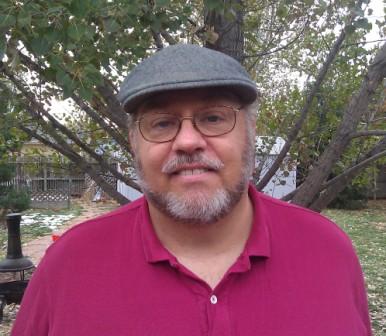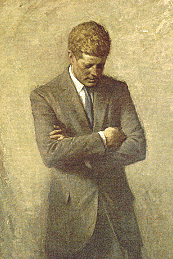Aaron Shikler Oil Portrait of John F. Kennedy 1970 White House Historical Association (White House
Collection)
A Festering Wound
By Richard Girard
"My heart burnt
within me with indignation and grief; we could think of nothing else. . . . All
night long we had only snatches of sleep, waking up perpetually to the sense of
a great shock and grief. Every one is feeling the same. I never knew so
universal a feeling."
Elizabeth Gaskell, English novelist. Letter, 28 April 1865, to Harvard professor Charles E. Norton, on the news of Lincoln's assassination reaching England.
"The scientific mind does not so much
provide the right answers as ask the right questions."
Claude L????vi-Strauss, French anthropologist. The Raw and the Cooked, "Overture," section 1 (1964).
It has been almost forty-nine years
since President John Fitzgerald Kennedy was murdered from ambush in the streets
of Dallas.
And we are no closer to ending the pain
of that awful moment today then we were then.
Like an ulcerated wound, our nation can
never fully heal from the effects of this crime until we know the
truth.
The findings of the Warren Commission
are regrettably not the truth. It is a mass of hypothesis and conjecture
dependent on investigative agencies who were more interested in covering up
their own mistakes or culpability than finding the truth. This is best
demonstrated by the March
3, 1964 memo from CIA Director John McCone to Secret Service Chief James
Rowley revealing that Lee Harvey Oswald was a trained CIA operative. This
information was never given to the Warren Commission, according to an October
17, 2009 NY Times article by Scott Shane, "C.I.A. is Still Cagey About Oswald
Mystery." If Jim Garrison had this information, would Clay Shaw have been
declared "not guilty?" I doubt it.
There is also the recently discovered film of
Secret Service Agents Henry Rybka and Don Lawton being ordered off of the back
of JFK's limousine as it was leaving Love Field that fateful November day.
These orders were vital to the assassination, because it opened up JFK to being
shot from the rear, and prevented the immediate shielding of the President's and
First Lady's bodies by those of the Secret Service agents on the back of the
limousine. The reason for, as well as the ultimate source for this stand-down
order has never been properly investigated. There is photographic evidence that
Secret Service agent's were on the back of the limousine for the motorcade in
San Antonio the day before. The surviving members of Kennedy's Secret Service
detail deny receiving an order from President Kennedy to stay off the rear of
the limousine. In fact the order seems to have come from Assistant Special Agent
in Charge Vincent M. Boring, without authorization by any other superior.
(Vincent Palamara, "The Secret Service on the Job in Dallas;" Murder in
Dealey Plaza: What We Know Now That We Didn't Know Then About the Death of
JFK ; James H. Fetzer PhD., editor; Catfeet Press; Peru, Illinois; copyright
2000; pp. 159-174)
Other evidence was withheld from the
Warren Commission. One of these pieces of evidence was the photograph of the two empty
shell casings and one unfired round of 6.5 mm ammunition that were found in
the area of the so-called "sniper's nest" on the sixth floor of the Texas School
Book Depository (TSBD) (photographed in the Baltimore Field Office of the FBI),
as well as the original evidence sheets submitted to the Dallas Office of the
FBI by Special Agent Vincent E. Drain on November 23, 1963.
This means whoever was up on the sixth
floor of the TSBD may have pulled the trigger three times, but that sniper only
sent two bullets hurtling downrange towards President Kennedy that murderous
Texas afternoon. If the 6.5 mm Mannlicher-Carcano carbine (not rifle) found
"hidden" among the boxes of books at TSBD only fired twice that afternoon, there
has to be--by the Warren Commission's own logic--more than one assassin. (This
also explains why the FBI tried so hard to get James Teague to say he was not
grazed by concrete from a bullet that hit the curb when he reported it after the
assassination.)
I say whoever because I have very strong
doubts that Lee Harvey Oswald was anything other than what he claimed to
reporters in the Dallas jailhouse, "a patsy." I think he served the exact
purpose he was supposed to at the TSBD that afternoon--slow down any initial
police response to the sixth floor (by being present in the building's central
second floor lunchroom), while the gunman hid the carbine, and assumed an
identity (either Secret Service or Military Intelligence credentials) that
permitted his escape in the chaos.
(Note: You can view every article as one long page if you sign up as an Advocate Member, or higher).






